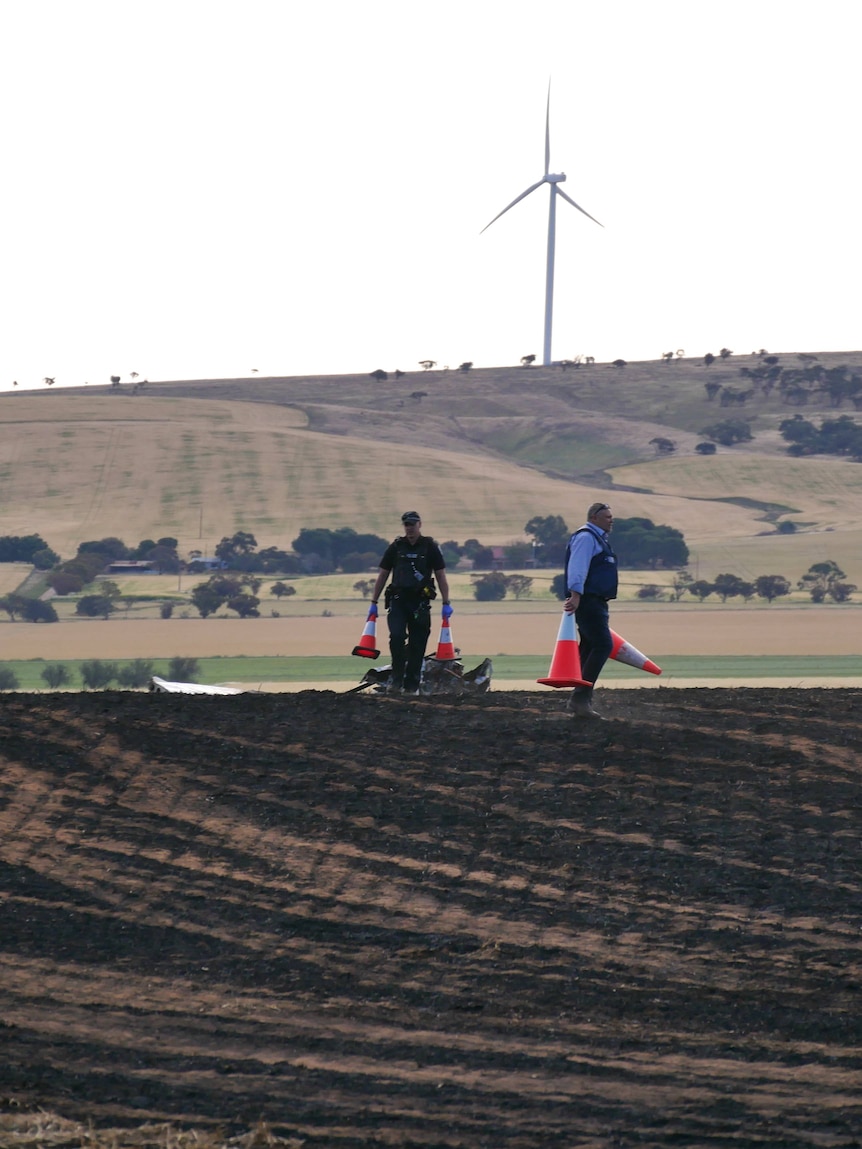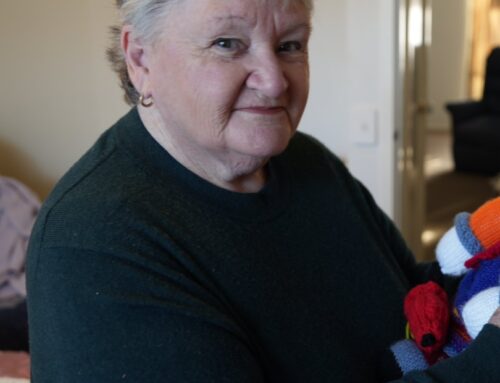Transport safety advocates are calling for more power companies to subsidise powerline marking near airstrips on rural properties to prevent more fatal accidents.
A father and son of a family from South Australia’s Mid North lost their lives last October when the light plane they were flying hit a single powerline on a rural property at Merriton, near Crystal Brook.
On a Sunday afternoon, Ben Mumford, 50, and his son Charlie, 24, took off from their paddock in a Cessna 172N piloted by Ben.
It is understood they may have intended to fly to Kangaroo Island, but transport safety authorities could not confirm the aircraft’s route.
At 4:12pm, the aircraft returned home and Mr Mumford attempted to land the plane on the western edge of a rural airstrip on his property.
The plane’s wing clipped a single aerial powerline stretching diagonally across the paddock and crashed, igniting a blaze.
Charlie died at the scene and while his father was rushed to the Royal Adelaide Hospital, he died hours after the crash.
The findings of the Australian Transport Safety Bureau’s (ATSB) investigation released last week concluded “the pilot likely lost awareness of and did not see” the powerline.
A common danger
Powerlines are exceptionally hard for pilots to see when flying.
ATSB director of transport safety, Stuart Godley, said light aircraft hitting powerlines was a “fairly common” occurrence in Australia.
“Generally, by the time a pilot can see them, they’re too close to avoid,” Dr Godley said.
The ATSB said it received about 30 reports of crashes involving wire strikes every year, but most cases involved aircraft flying low over paddocks undertaking agricultural spraying operations.
Aviation safety advisor Terry Horsam delivers workshops for the Civil Aviation Safety Authority (CASA).
He said they did not teach pilots to try to find aerial powerlines when they were flying.
“The wire is almost impossible to see with the naked eye, but look for the poles, they’re quite evenly spread apart, but they’re not always that obvious,” Mr Horsam said.
The two ways to mitigate risk were pilot awareness — knowing where powerlines are and planning flight paths — and visible powerline markers.
Onus on property owners
While larger or CASA-certified airports are surveyed and all potential hazards marked out, there is no legal requirement to mark powerlines near rural airstrips on private property.
In South Australia, property owners can pay SA Power Networks to install powerline markers, which the electricity distributor will then maintain.
The powerlines near the Mumfords’ property were not marked for private aviation purposes, but SA Power Networks had installed some repurposed orange buoys as markers for their own inspections.
Queensland electricity company Energex runs the Rotamarka incentive program reducing the cost of up to 10 markers for rural property owners, and SafeWork NSW offers rebates of up to $1,000 to small businesses that buy and install safety equipment including aerial markers.
No such scheme exists in South Australia, and it was something Mr Horsam wanted to see change.
“Anything that increases the visibility of these wires is going to assist pilots in being able to see them and, therefore, avoid them,” Mr Horsam said.
Dr Godley said a subsidy program would help, but ultimately it was the pilot’s responsibility to prepare before a flight.
“It’s really, really important for this to happen across the country, but at the end of the day it’s up to the property owner to identify which wires are going to be the ones in the path of aeroplanes,” he said.
SA Power Networks acting head of corporate affairs, Cecilia Schutz, said the distributor invested in campaigns highlighting on-farm safety and would support a program subsiding the cost of installing aerial powerline markers on private property.
“SA Power Networks would be open to exploring this initiative in conjunction with the South Australian government and other key stakeholders,” Ms Schutz said.





